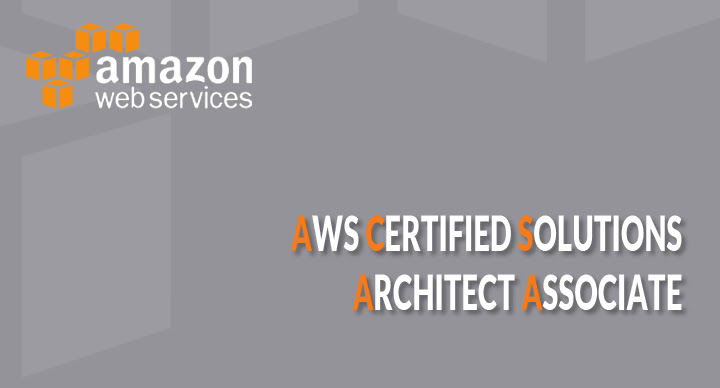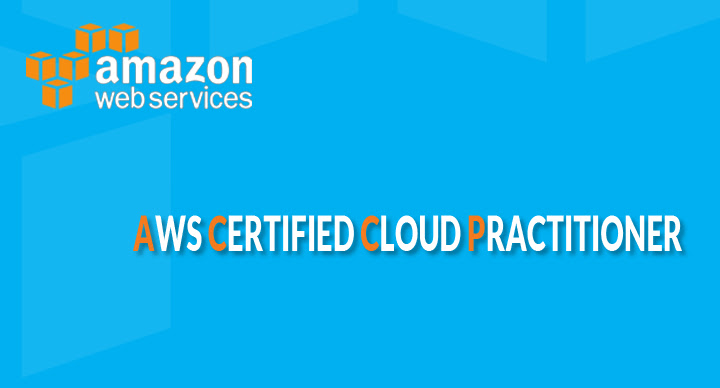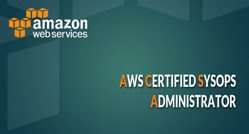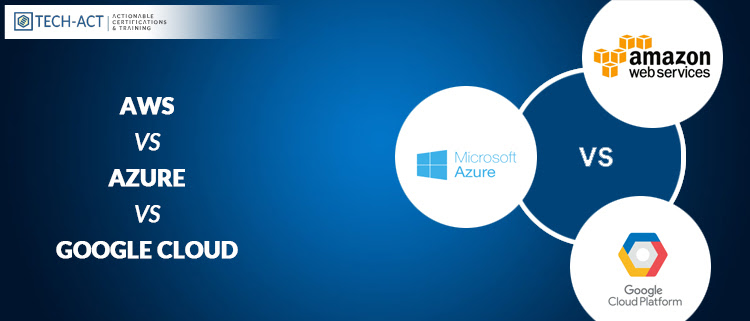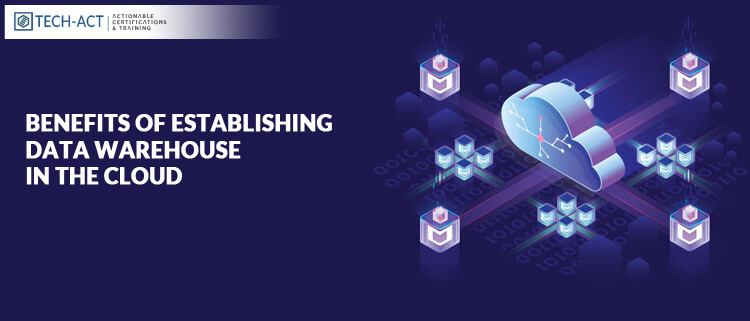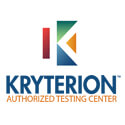Top AWS Interview Question And Answers 2021
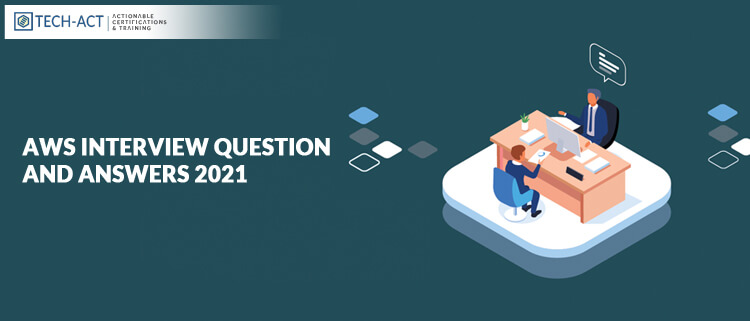
A popular saying goes as, well begun is half done! So the more you prepare yourself for the basic and technical round of AWS interview questions and answers, the better your chance to make it through. The interviewer’s first impression would be that the candidate is knowledgeable about AWS which is critical as it then builds faith in the interviewer about the candidate and his AWS know how. Of course, the interviewer does not expect that you know each and everything to the precise detail but it certainly would make a positive impact.
The increasing demand of cloud computing professionals has made it a very attractive career option. Hence, in the race to succeed, every aspiring candidate is curious to know about what kind of questions are generally asked in AWS interviews which would help them to clear the interview with ease. So today in this blog, we will look at the top AWS interview questions and their answers.
For your better understanding, we have segregated the set of AWS FAQs into two parts. The first set is of basic AWS interview questions and the second part includes technical AWS interview questions and answers.
Basic AWS Interview Questions and Answers:
- What is AWS?
- The full form of AWS is Amazon Web Services. It is a collection of remote computing services and it provides infrastructure services i.e. web services which is called Cloud Computing.
- Main Components of AWS?
- The main components of AWS are Route 53, Simple Email Service, Identity and access management, Simple Storage device or (S3), Elastic Compute Cloud (EC2), Elastic Block Store (EBS), Cloud watch.
- Define AWS S3?
- The full form of S3 is Simple Storage Service. Its interface can be used to store and retrieve the data (no limit) at any given time and from anywhere on the web. The payment model of S3 is “pay as you go”.
- Comparison between AWS and Openstack?
- License in AWS is Amazon proprietary and in Openstack it is open source. The operating system in AWS depends on what the cloud administrators provides and in Openstack the OS is whatever AMIs provided by AWS.
- What is the importance of buffer in Amazon web services?
- Elastic Load balancer ensures that the incoming traffic is distributed optimally across various AWS. Different components are synchronized by buffer & it also makes them additionally elastic to a burst of load or traffic. The buffer creates an equilibrium which links various apparatus and crafts them. This makes them work at an identical rate to supply more rapid services
- Define AMI?
- AMI is Amazon Machine Image. This template provides the information which is required to launch an instance that is the copy of AMI running as a virtual server in the cloud. Instances can be launched from many different AMIs.
- Relationship between an instance and AMI?
- A single AMI is capable of launching multiple types of instances. The hardware of the host computer used for your instances is defined by the instance type. Each instances type has different computer and memory capabilities. After the launch of the instance, it looks like a traditional host and one can interact with it.
- How can one send a request to Amazon S3?
- Amazon S3 is a REST service & by using the REST API or the AWS SDK wrapper libraries that wrap the underlying Amazon S3 REST API one can send the request.
- What is the difference between Amazon S3 and EC2 is?
- EC2 is a cloud web service used for hosting the application and S3 is a data storage system in which unlimited data can be stored.
- By default how many buckets can you create in AWS?
- Up to 100 buckets can be created in each of your AWS accounts by default.
- What is T2 instances ?
- They are designed to provide moderate baseline performance and it has the capability to burst the higher performance as required by the workload.
- What are the security best practices for Amazon EC2 ?
- To control access of the AWS resources, use AWS identity and access management.
- Restrict the access by allowing only trusted hosts or networks.
- Review the security rules frequently.
- Open up the permission i.e. ONLY required
- Password based login should be disabled.
- Key-pairs in AWS?
- They are secure login information for your virtual machines. Use key-pairs to connect to the instances, which contain a public-key and private-key.
- Various types of Instances?
- The various types of Instances are general purpose, Computer Optimized, Memory Optimized, Storage Optimized & Accelerated Computing
- Does Amazon VPC support the property of broadcast or multicast?
- No, it doesn’t.
- Define roles?
- It provides permissions to entities that can trusted within your AWS account. It is very similar to users. With roles, creating any username and password to work with the resources is not required.
- Define Edge locations?
- The area where the contents will be cached is Edge Location. So the content will automatically be searched in the edge location when a user is trying to access any content.
- What is VPC?
- VPC is Virtual Private Cloud. It enables customization of your networking configuration. This network is isolated from another network in the cloud. It allows you to have your IP address range, internet gateways, subnet and security groups.
- What is Snowball?
- Snowball is a data transport option. Source appliances are used to move a large amount of data in & out of AWS. It enables one to transfer a massive amount of data from one place to another. It makes networking cost effective.
- Define Redshift?
- It is a big data warehouse product. It is one of the most powerful, fast & fully managed data warehouse service in the cloud.
- What benefits auto-scaling brings in?
- It offers fault tolerance, effective cost management & better availability.
- What is Subnet?
- A large section of IP Address which is divided into chunks is called subnets.
- What is SQL?
- SQL is Simple Queues Services. It is distributed queuing service & it acts as a mediator for two controllers.
- Define SimpleDB?
- Simple DB is also known as key value data store. It is highly available & flexible non-relational database that enables developers to request and store data with minimal database management and administrative responsibility.
- How many AWS services are there in 2020?
- The AWS Serverless Application repository is available in the AWS GovCloud (US-East) region. Hence, the availability of the services has increased to a total of 18 AWS regions i.e. across North America, South America, the EU & the Asia Pacific.
- Cheapest AWS region?
- The US standard is the most established and cheapest AWS region.
- Popular services of AWS ?
- The most popular AWS Services are Amazon S3, AWS Lambda, Amazon Glacier, Amazon EC2, Amazon SNS, Amazon CloudFront, Amazon EBS, Amazon Kinesis, Amazon VPC, Amazon SQ.
- Amazon S3 service is globally available?
- Yes, it is a global service. Object storage is provided through the web interface and it runs its global e-commerce network by using Amazon scalable storage infrastructure.
- Advantages of AWS?
- Easy to Use, Wide Range of Service, No Limitation (Server Capacity),Highly Reliable, Managed IT Services, Flexible and Affordable.
- What is Auto Scaling?
- Auto scaling enables automatic scaling of the capacity to maintain steady and predictable performance. By using this one can scale up various resources across various services in minutes.
Technical AWS Interview Questions and Answers:
- How do you set up a system to monitor website metrics in real-time in AWS?
- With the help of Amazon CloudWatch, one can monitor the application status of various AWS services and custom events.
- State Changes in Amazon EC2, Auto-scaling Lifecycle events, Scheduled events, AWS API calls & Console Sign-in events, all these can be monitored with the help of Amazon CloudWatch.
- What are the different types of virtualization in AWS?/strong>
- There are three types of virtualization in AWS i.e. Hardware Virtual Machine, Paravirtualization & Paravirtualization in HVM.
- What is geo-targeting in CloudFront?
- For instance, if you want your business to produce and show personalized content to the audience based on their geographic location without making any changes to the URL then simply go for geo-targeting.
- Geo-targeting aids one in creating a customized content for the group of spectators of a specific geographical area by giving priority to their needs.
- What are the differences between NAT Gateways and NAT Instances?
- Though both NAT Gateways and NAT Instances provides very similar functions. Below mentioned are some of the key differences.
| Functions | NAT Gateways | NAT Instances |
| Availability | It is high | It is high |
| Bandwidth | Here, it is up to 45Gbps | Here, it depends upon instances bandwidth |
| Maintenance | AWS manages it | You can manage it |
| Performance | It delivers good performance | It delivers average performance |
| Cost | It depends upon No. of gateways, duration and amount of usage. | It depends upon No. of instances, duration, amount & type of usage. |
| Size and Load | There is uniformity | It can be changed as per the requirement |
| Security Groups | Not possible | Possible |
- What are the tools and techniques that you can use in AWS to identify if you are paying more than you should be, and how to correct it?
- The below-mentioned resources will help you to understand whether the amount you are paying for the resource is accurate or not.
- Check the top services table: This is available on the dashboard in the cost management console which will show you the top five services that are used the most. It will also explain you that how much you are paying on the resources in question.
- Cost explorer: One can see and check the usage cost for 13 months. Also you will come to know the amount for the coming three months.
- Cost allocation tags: Helps you in identifying the resource that has cost you more in a particular month. It also organizes and track your resource.
- What services can be used to create a centralized logging solution?
- The below mentioned services can be used for centralized logging solution.
- Amazon CloudWatch Logs, this can be stored in Amazon S3.
- Amazon Elastic Search can be used to visualize them.
- Amazon Kinesis Firehouse can be used to move data from Amazon S3 to Amazon ElasticSearch.
- What is the difference between stopping and terminating an EC2 instance?
- For many Stopping and Terminating may sound very similar, however there is a huge difference.
- Stopping an EC2 instances means there will be a normal shutdown on the instance and it will move to a stopped state.
- Terminating an EC2 instances means it will not only move to stopped state but the EBS volume attached to it will be deleted and it will never be recovered.
- What are the different types of EC2 instances?
- There are three types of EC2 Instances i.e. On-demand Instance, Spot Instance & Reserved Instance.
- What are the common types of AMI designs?
- The types are completely baked AMI which are Slightly baked AMI (JeOS AMI) & Hybrid AMI.
- How do you allow a user to gain access to a specific bucket?
- If you want to provide access to the user to a specific bucket, then simply follow the below mentioned steps.
- Categorize your instances.
- Define how authorized users can manage specific servers.
- Lockdown your tags.
- Attach your policies to IAM users.
- How do you monitor Amazon VPC?
- One can control VPC by using CloudWatch and CloudWatch logs & VPC flow logs
- What are the factors to consider while migrating to Amazon Web Services?
- Operational amount, Workforce Capacity, Cost evasion, Operational facility & Business quickness are the factors that need to be considered while migrating to Amazon Web Services.
- What are RTO and RPO in AWS?
- RTO stands for Recovery Time Objective. It can be defined as the maximum time your organization is willing to wait for a recovery to complete in the wake of an outage.
- RPO stands for Recovery Point Objective. It is the maximum amount of data which is lost and your organization willing accepts it as a measured in time.
- How is AWS CloudFormation different from AWS Elastic Beanstalk?
- AWS Cloud Formation aids you in provisioning and describing the infrastructure resources that is available in your cloud environment. It also supports the infrastructure needs of different types of applications.
- AWS Elastic Beanstalk gives such an environment which will make deployment and running application in the cloud easier. It helps in managing the lifecycle of your application by collaborating with the developer’s tool.
- How can you automate EC2 backup using EBS?
- This can be done by following the below mentioned steps:
- Firstly get the list of instances and then connect to AWS via API, so that you can list the Amazon EBS volumes that are attached locally to the instances.
- This can be done by following the below mentioned steps:
- Firstly get the list of instances and then connect to AWS via API, so that you can list the Amazon EBS volumes that are attached locally to the instances.
- Prepare a list of snapshots of each volume and then assign a retention period of the snapshot. Post this; create a snapshot of each volume.
- Remove the snapshot if it is older than the retention period.
- What are the different types of load balancers in AWS?
- There are three types of load balancers in AWS i.e. Application load balancer, Network load balancer & Classic load balancer.
- How can you use AWS WAF in monitoring your AWS applications?
- Firstly, AWS WAF safeguards your web application from web exploitations.
- It aids in controlling the traffic flow to your application.
- It also enables you to create custom rules which block common attack patterns.
- It allows all requests, prevents all requests and count all requests for a new policy.
- How does AWS IAM help your business?
- It helps business by managing IAM users and their access & it also manages access for federated users.
- How does AWS config work with AWS CloudTrail?
- AWS Cloud Trail records the API activity of the user on your account and then it enables you to access the same information.
- The entire details about API actions can be gained by using CloudTrail.
- Point-in-time configuration details are captured by AWS Config, for your AWS resources as Configuration Items.
- These Configuration items help you in understanding that how your AWS resource will appear like at any given point in time.
- Who made an API call for the modification of resources, such question can be answered in no time with the help of CloudTrail.
- CloudTrail also aids in detecting a security group that was wrongly configured.
- What are the consistency models in DynamoDB?
- Eventual Consistency Model and Strong Consistency Model are the two models in DynamoDB.
- Eventual Consistency Model, it maximizes read throughput but it doesn’t display the output of a recently completed write.
- Strong Consistency Model, it delays in writing the data, however it shows the updated data every time you read it.
All the best!!! Prepare well!!
A popular saying goes as, well begun is half done! So the more you prepare yourself for the basic and technical round of AWS interview questions and answers, the better your chance to make it through. The interviewer’s first impression would be that the candidate is knowledgeable about AWS which is critical as it then builds faith in the interviewer about the candidate and his AWS know how. Of course, the interviewer does not expect that you know each and everything to the precise detail but it certainly would make a positive impact.
The increasing demand of cloud computing professionals has made it a very attractive career option. Hence, in the race to succeed, every aspiring candidate is curious to know about what kind of questions are generally asked in AWS interviews which would help them to clear the interview with ease. So today in this blog, we will look at the top AWS interview questions and their answers.
For your better understanding, we have segregated the set of AWS FAQs into two parts. The first set is of basic AWS interview questions and the second part includes technical AWS interview questions and answers.
Basic AWS Interview Questions and Answers:
- What is AWS?
- The full form of AWS is Amazon Web Services. It is a collection of remote computing services and it provides infrastructure services i.e. web services which is called Cloud Computing.
- Main Components of AWS?
- The main components of AWS are Route 53, Simple Email Service, Identity and access management, Simple Storage device or (S3), Elastic Compute Cloud (EC2), Elastic Block Store (EBS), Cloud watch.
- Define AWS S3?
- The full form of S3 is Simple Storage Service. Its interface can be used to store and retrieve the data (no limit) at any given time and from anywhere on the web. The payment model of S3 is “pay as you go”.
- Comparison between AWS and Openstack?
- License in AWS is Amazon proprietary and in Openstack it is open source. The operating system in AWS depends on what the cloud administrators provides and in Openstack the OS is whatever AMIs provided by AWS.
- What is the importance of buffer in Amazon web services?
- Elastic Load balancer ensures that the incoming traffic is distributed optimally across various AWS. Different components are synchronized by buffer & it also makes them additionally elastic to a burst of load or traffic. The buffer creates an equilibrium which links various apparatus and crafts them. This makes them work at an identical rate to supply more rapid services
- Define AMI?
- AMI is Amazon Machine Image. This template provides the information which is required to launch an instance that is the copy of AMI running as a virtual server in the cloud. Instances can be launched from many different AMIs.
- Relationship between an instance and AMI?
- A single AMI is capable of launching multiple types of instances. The hardware of the host computer used for your instances is defined by the instance type. Each instances type has different computer and memory capabilities. After the launch of the instance, it looks like a traditional host and one can interact with it.
- How can one send a request to Amazon S3?
- Amazon S3 is a REST service & by using the REST API or the AWS SDK wrapper libraries that wrap the underlying Amazon S3 REST API one can send the request.
- What is the difference between Amazon S3 and EC2 is?
- EC2 is a cloud web service used for hosting the application and S3 is a data storage system in which unlimited data can be stored.
- By default how many buckets can you create in AWS?
- Up to 100 buckets can be created in each of your AWS accounts by default.
- What is T2 instances ?
- They are designed to provide moderate baseline performance and it has the capability to burst the higher performance as required by the workload.
- What are the security best practices for Amazon EC2 ?
- To control access of the AWS resources, use AWS identity and access management.
- Restrict the access by allowing only trusted hosts or networks.
- Review the security rules frequently.
- Open up the permission i.e. ONLY required
- Password based login should be disabled.
- Key-pairs in AWS?
- They are secure login information for your virtual machines. Use key-pairs to connect to the instances, which contain a public-key and private-key.
- Various types of Instances?
- The various types of Instances are general purpose, Computer Optimized, Memory Optimized, Storage Optimized & Accelerated Computing
- Does Amazon VPC support the property of broadcast or multicast?
- No, it doesn’t.
- Define roles?
- It provides permissions to entities that can trusted within your AWS account. It is very similar to users. With roles, creating any username and password to work with the resources is not required.
- Define Edge locations?
- The area where the contents will be cached is Edge Location. So the content will automatically be searched in the edge location when a user is trying to access any content.
- What is VPC?
- VPC is Virtual Private Cloud. It enables customization of your networking configuration. This network is isolated from another network in the cloud. It allows you to have your IP address range, internet gateways, subnet and security groups.
- What is Snowball?
- Snowball is a data transport option. Source appliances are used to move a large amount of data in & out of AWS. It enables one to transfer a massive amount of data from one place to another. It makes networking cost effective.
- Define Redshift?
- It is a big data warehouse product. It is one of the most powerful, fast & fully managed data warehouse service in the cloud.
- What benefits auto-scaling brings in?
- It offers fault tolerance, effective cost management & better availability.
- What is Subnet?
- A large section of IP Address which is divided into chunks is called subnets.
- What is SQL?
- SQL is Simple Queues Services. It is distributed queuing service & it acts as a mediator for two controllers.
- Define SimpleDB?
- Simple DB is also known as key value data store. It is highly available & flexible non-relational database that enables developers to request and store data with minimal database management and administrative responsibility.
- How many AWS services are there in 2020?
- The AWS Serverless Application repository is available in the AWS GovCloud (US-East) region. Hence, the availability of the services has increased to a total of 18 AWS regions i.e. across North America, South America, the EU & the Asia Pacific.
- Cheapest AWS region?
- The US standard is the most established and cheapest AWS region.
- Popular services of AWS ?
- The most popular AWS Services are Amazon S3, AWS Lambda, Amazon Glacier, Amazon EC2, Amazon SNS, Amazon CloudFront, Amazon EBS, Amazon Kinesis, Amazon VPC, Amazon SQ.
- Amazon S3 service is globally available?
- Yes, it is a global service. Object storage is provided through the web interface and it runs its global e-commerce network by using Amazon scalable storage infrastructure.
- Advantages of AWS?
- Easy to Use, Wide Range of Service, No Limitation (Server Capacity),Highly Reliable, Managed IT Services, Flexible and Affordable.
- What is Auto Scaling?
- Auto scaling enables automatic scaling of the capacity to maintain steady and predictable performance. By using this one can scale up various resources across various services in minutes.
Technical AWS Interview Questions and Answers:
- How do you set up a system to monitor website metrics in real-time in AWS?
- With the help of Amazon CloudWatch, one can monitor the application status of various AWS services and custom events.
- State Changes in Amazon EC2, Auto-scaling Lifecycle events, Scheduled events, AWS API calls & Console Sign-in events, all these can be monitored with the help of Amazon CloudWatch.
- What are the different types of virtualization in AWS?/strong>
- There are three types of virtualization in AWS i.e. Hardware Virtual Machine, Paravirtualization & Paravirtualization in HVM.
- What is geo-targeting in CloudFront?
- For instance, if you want your business to produce and show personalized content to the audience based on their geographic location without making any changes to the URL then simply go for geo-targeting.
- Geo-targeting aids one in creating a customized content for the group of spectators of a specific geographical area by giving priority to their needs.
- What are the differences between NAT Gateways and NAT Instances?
- Though both NAT Gateways and NAT Instances provides very similar functions. Below mentioned are some of the key differences.
| Functions | NAT Gateways | NAT Instances |
| Availability | It is high | It is high |
| Bandwidth | Here, it is up to 45Gbps | Here, it depends upon instances bandwidth |
| Maintenance | AWS manages it | You can manage it |
| Performance | It delivers good performance | It delivers average performance |
| Cost | It depends upon No. of gateways, duration and amount of usage. | It depends upon No. of instances, duration, amount & type of usage. |
| Size and Load | There is uniformity | It can be changed as per the requirement |
| Security Groups | Not possible | Possible |
- What are the tools and techniques that you can use in AWS to identify if you are paying more than you should be, and how to correct it?
- The below-mentioned resources will help you to understand whether the amount you are paying for the resource is accurate or not.
- Check the top services table: This is available on the dashboard in the cost management console which will show you the top five services that are used the most. It will also explain you that how much you are paying on the resources in question.
- Cost explorer: One can see and check the usage cost for 13 months. Also you will come to know the amount for the coming three months.
- Cost allocation tags: Helps you in identifying the resource that has cost you more in a particular month. It also organizes and track your resource.
- What services can be used to create a centralized logging solution?
- The below mentioned services can be used for centralized logging solution.
- Amazon CloudWatch Logs, this can be stored in Amazon S3.
- Amazon Elastic Search can be used to visualize them.
- Amazon Kinesis Firehouse can be used to move data from Amazon S3 to Amazon ElasticSearch.
- What is the difference between stopping and terminating an EC2 instance?
- For many Stopping and Terminating may sound very similar, however there is a huge difference.
- Stopping an EC2 instances means there will be a normal shutdown on the instance and it will move to a stopped state.
- Terminating an EC2 instances means it will not only move to stopped state but the EBS volume attached to it will be deleted and it will never be recovered.
- What are the different types of EC2 instances?
- There are three types of EC2 Instances i.e. On-demand Instance, Spot Instance & Reserved Instance.
- What are the common types of AMI designs?
- The types are completely baked AMI which are Slightly baked AMI (JeOS AMI) & Hybrid AMI.
- How do you allow a user to gain access to a specific bucket?
- If you want to provide access to the user to a specific bucket, then simply follow the below mentioned steps.
- Categorize your instances.
- Define how authorized users can manage specific servers.
- Lockdown your tags.
- Attach your policies to IAM users.
- How do you monitor Amazon VPC?
- One can control VPC by using CloudWatch and CloudWatch logs & VPC flow logs
- What are the factors to consider while migrating to Amazon Web Services?
- Operational amount, Workforce Capacity, Cost evasion, Operational facility & Business quickness are the factors that need to be considered while migrating to Amazon Web Services.
- What are RTO and RPO in AWS?
- RTO stands for Recovery Time Objective. It can be defined as the maximum time your organization is willing to wait for a recovery to complete in the wake of an outage.
- RPO stands for Recovery Point Objective. It is the maximum amount of data which is lost and your organization willing accepts it as a measured in time.
- How is AWS CloudFormation different from AWS Elastic Beanstalk?
- AWS Cloud Formation aids you in provisioning and describing the infrastructure resources that is available in your cloud environment. It also supports the infrastructure needs of different types of applications.
- AWS Elastic Beanstalk gives such an environment which will make deployment and running application in the cloud easier. It helps in managing the lifecycle of your application by collaborating with the developer’s tool.
- How can you automate EC2 backup using EBS?
- This can be done by following the below mentioned steps:
- Firstly get the list of instances and then connect to AWS via API, so that you can list the Amazon EBS volumes that are attached locally to the instances.
- This can be done by following the below mentioned steps:
- Firstly get the list of instances and then connect to AWS via API, so that you can list the Amazon EBS volumes that are attached locally to the instances.
- Prepare a list of snapshots of each volume and then assign a retention period of the snapshot. Post this; create a snapshot of each volume.
- Remove the snapshot if it is older than the retention period.
- What are the different types of load balancers in AWS?
- There are three types of load balancers in AWS i.e. Application load balancer, Network load balancer & Classic load balancer.
- How can you use AWS WAF in monitoring your AWS applications?
- Firstly, AWS WAF safeguards your web application from web exploitations.
- It aids in controlling the traffic flow to your application.
- It also enables you to create custom rules which block common attack patterns.
- It allows all requests, prevents all requests and count all requests for a new policy.
- How does AWS IAM help your business?
- It helps business by managing IAM users and their access & it also manages access for federated users.
- How does AWS config work with AWS CloudTrail?
- AWS Cloud Trail records the API activity of the user on your account and then it enables you to access the same information.
- The entire details about API actions can be gained by using CloudTrail.
- Point-in-time configuration details are captured by AWS Config, for your AWS resources as Configuration Items.
- These Configuration items help you in understanding that how your AWS resource will appear like at any given point in time.
- Who made an API call for the modification of resources, such question can be answered in no time with the help of CloudTrail.
- CloudTrail also aids in detecting a security group that was wrongly configured.
- What are the consistency models in DynamoDB?
- Eventual Consistency Model and Strong Consistency Model are the two models in DynamoDB.
- Eventual Consistency Model, it maximizes read throughput but it doesn’t display the output of a recently completed write.
- Strong Consistency Model, it delays in writing the data, however it shows the updated data every time you read it.
All the best!!! Prepare well!!

